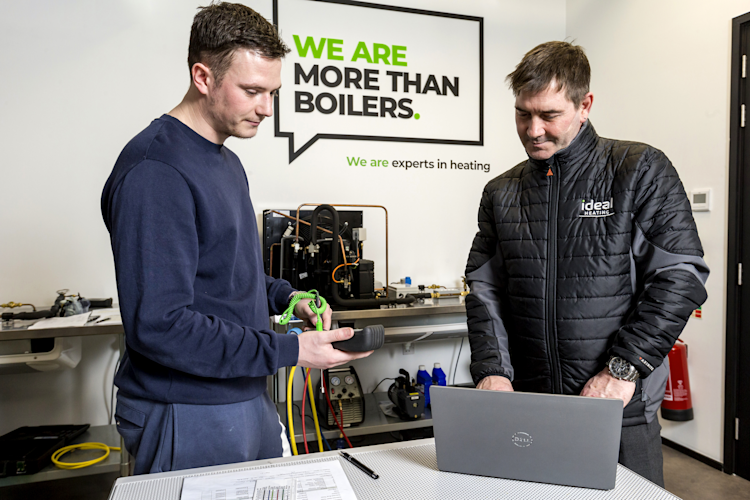
Eight top tips for saving energy with your central heating this Winter
As the cost-of-living continues to squeeze homeowners’ budgets, it’s understandable that many people are concerned about their energy bills this Winter.
By making sure your central heating is as efficient as it can be, it is possible to use less energy and in turn bring costs down. Read on for our advice on how to get the most out of your heating system.
1. Book an annual boiler service
Annual boiler services will keep your boiler in peak operating condition and help ensure that minor faults don’t develop. This can save you money in the long run by avoiding common issues like your boiler seizing in the Winter or breaking down altogether. A service must be performed by a Gas Safe registered engineer.
2. Check your boiler settings
Check the flow temperature (temperature of the water entering your heating system) settings of your Combi boiler and avoid the highest settings until the weather calls for it. This will save energy and make your boiler run more efficiently.
Traditionally, heating systems have been designed for a flow temperature of 80°C, however, for most of the heating season they can operate at a lower temperature while still keeping your house warm. We recommend turning your boiler flow temperature down to around 60°C which can be done using the dials on the front of your boiler. On Ideal boilers, locate the dial with the radiator symbol, and then turn it down until the number on the screen shows the flow temperature you want.
The best setting for you might take a bit of experimentation. For modern condensing boilers, reducing the flow temperature down to 60°C will make the boiler run in condensing mode and maximise its operating efficiency. Monitor how your heating runs over the next couple of days. If your rooms are taking a long time to warm up, or they’re not getting warm, then just tweak your flow temperature up a little bit until it’s comfortable.
3. Use a smart thermostat
Using a smart thermostat can help you save energy and cut costs by giving you greater control of your heating through a range of smart features. These include geolocation, which prevents the heating of an empty house, and ability to alter your heating when you're not at home.
4. Set a heating schedule
Using your thermostat to set a heating schedule can save energy by optimising your heating to fit your lifestyle. For instance, you can turn the heat off while you are at work or lower the overall temperature in your home by a few degrees in the morning. You can also lower the overall temperature in your home by a few degrees. For example, try setting your room thermostat to 18°C and then turning it up until you find a temperature that you’re comfortable with. You might find that this is lower than you initially thought!
It’s also a good idea to review your heating schedule when your routine changes. This could be because of a seasonal change or if you work from home on certain days.
5. Check your radiators are working properly
Over time, air can make its way into a heating system. If this happens, your radiators will take longer to heat up or be cold at the top. To correct this, you can bleed your radiators. Similarly, calling out a heating engineer to balance your radiators, ensuring they are supplied with the exact amount of heat they need, can increase the efficiency of your system by up to 15%.
If your radiator is cold at the bottom, it’s probably the result of a build-up of sludge. To fix this, and to reduce your energy consumption, you might want to call out an engineer who can power flush the system to clean it. However, if you want to try it yourself, check out our article here.
6. Utilise your Thermostatic Radiator Valves (TRVs)
If your radiator is fitted with Thermostatic Radiator Valves (TRVs), set them all at a lower level and gradually turn them up until the room is a comfortable temperature. It’s the boiler size and setting, as well as radiator size, that will affect the time it takes to heat the room up, so immediately turning the TRV to a higher setting won’t heat the room any faster. TRVs also allow you to turn the heating right down in rooms you don’t use very often, for example spare bedrooms.
7. Perform an audit of your home
Look around your home to identify areas where heat could be escaping from and put measures in place to avoid this. For example, use radiator reflectors, close your curtains, check for drafts, and keep doors closed between rooms.
8. Don’t leave your heating on all day
It sounds obvious but leaving your heating on when you go out isn’t the most efficient way to keep your home warm. Instead, simply heat your home when it feels cold as this way you will only be using energy when required. It will also reduce overall wear and tear and ensure consistent operation.


















